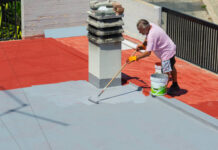Eyelash extensions have become a popular beauty trend. It enhances natural lashes and achieves stunning, long-lasting results. However, like any cosmetic procedure, some individuals may experience allergic reactions to the products used during the application process. If you’re one of the few who encounter an eyelash extension reaction, don’t worry.
This blog will provide essential tips and strategies to manage and alleviate these reactions, ensuring you can still enjoy the beauty of lash extensions safely.
Understanding Allergic Reactions to Eyelash Extensions
Allergic reactions occur when the body’s immune system reacts to a foreign substance, resulting in various symptoms. In the context of eyelash extensions, common symptoms of allergic reactions may include redness, itching, swelling, and irritation around the eye area. The primary culprits behind these reactions are the adhesive used to attach the extensions and the extensions’ materials, such as synthetic fibers.
It is crucial to recognize these symptoms and seek professional advice promptly. If you suspect an allergic reaction, discontinue using eyelash extensions until you consult a licensed lash technician or an allergist. Your safety and comfort are paramount, and understanding the cause of the reaction is the first step toward finding a suitable solution.
Identifying Allergens and Patch Testing
Before getting a full set of eyelash extensions, patch testing is critical to assess your skin’s sensitivity to the products used. Patch testing involves applying a small amount of the adhesive and extension material behind your ear or on the inner forearm. Observe the area for at least 24 hours for any signs of redness, swelling, or irritation. Even if you have never experienced allergies, sensitivities can develop over time, making patch testing essential for everyone.
Seeking Professional Consultation
If you encounter an allergic reaction, seeking professional consultation is vital. A licensed lash technician can help identify the specific allergen that caused the reaction and provide appropriate recommendations for future lash applications. Communication with your lash technician about known allergies or sensitivities is crucial to ensure a safe application process. They can use hypoallergenic adhesives or suggest alternative lash materials to minimize the risk of further reactions.
Strategies for Managing Allergic Reactions
While navigating through an allergic reaction, there are several strategies you can employ to manage the symptoms. Over-the-counter antihistamines can help alleviate itching and reduce inflammation. Topical creams containing hydrocortisone may also soothe irritated skin. Additionally, applying cold compresses to the affected area can help reduce swelling and provide relief.
Use aloe vera gel or chamomile tea bags to calm and soothe your irritated eyes and skin for a more natural approach. Always be gentle when caring for your eye area, and avoid rubbing or tugging on the extensions, as this may exacerbate the reaction.
Conclusion
Experiencing allergic reactions to eyelash extensions can be a concerning and uncomfortable experience, but it is manageable with the right knowledge and strategies. Understanding the allergens, performing patch tests, and seeking professional consultation is essential to ensure a safe and enjoyable lash extension experience. Implementing proper aftercare and considering alternative lash enhancement options can also be beneficial for managing allergic reactions effectively. Remember, your safety and comfort are paramount, so prioritize your well-being and find the lash enhancement solution that best suits your needs and preferences. With the right approach, you can continue enjoying lash extensions’ allure and beauty while confidently managing allergic reactions.





















